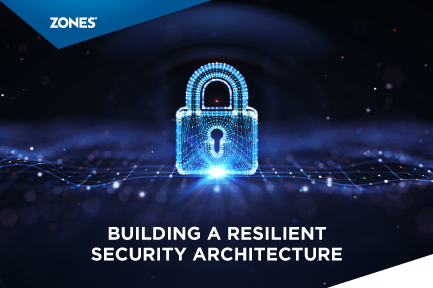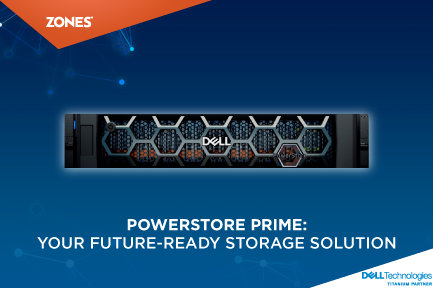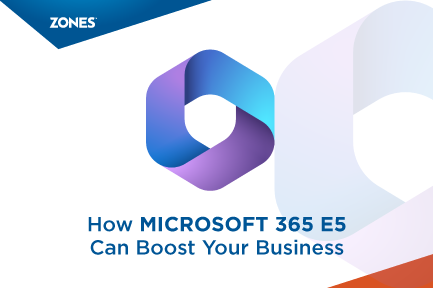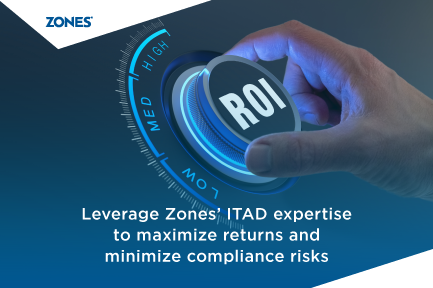Dell PowerStore Prime: Redefining Data Storage in the Digital Age
The world as we know it is undergoing a massive transformation. With advancements like Artificial Intelligence (AI) becoming integral across...
4 min read
![]() Zones
:
Oct 18, 2024 10:32:20 AM
Zones
:
Oct 18, 2024 10:32:20 AM

Data breaches have emerged as one of the most significant threats to organizations. As businesses rely more on technology, they face complicated cybersecurity challenges beyond typical IT systems. An efficient enterprise security architecture (ESA) is crucial for managing these risks, protecting data, and assuring business continuity. As businesses try to secure sensitive information from increasing cyber threats, a solid and adaptable security architecture becomes critical for preventing data breaches and ensuring business continuity.
According to recent reports, the global average cost per data breach reached $4.88 million in 2024, with the healthcare industry bearing the highest costs. These alarming figures underscore the need for businesses to adopt advanced security strategies to protect sensitive data and maintain operational stability.
Security architecture is a framework that combines security protocols, strategies, and technology across all IT systems and processes. It acts as a blueprint for ensuring that every layer of the organization's IT infrastructure—from endpoints and networks to apps and cloud environments—is protected against both internal and external threats.
Organizations can avoid breaches by embedding security controls into all aspects of the company's IT ecosystem. A well-designed security architecture detects weaknesses, strengthens defense systems, and reduces the severity of potential incidents.
Security architecture is important because it takes a holistic approach to cybersecurity. It targets more than perimeter defenses, including advanced persistent threats (APTs), insider hazards, and vulnerabilities in complex, multi-cloud settings.
Exploited vulnerabilities, ineffective access controls, or a lack of ongoing monitoring frequently cause data breaches.An advanced security architecture combines multiple technologies and approaches to create multi-layered defense mechanisms that detect and eliminate threats before they infiltrate the business.
When properly aligned with business needs, security architecture strengthens organizational defenses, enabling businesses to manage risks and reduce the likelihood of data breaches proactively.Ensuring Business Continuity Through Resilient Security Architecture
Enterprises must prioritize business continuity when confronted with cyberattacks, natural disasters, or system failures. A comprehensive security architecture ensures that essential business operations can continue despite disruptions.
With a focus on continuity, the security architecture gives businesses the tools to recover from attacks while minimizing operational disruptions.
As cybersecurity threats evolve in sophistication, security architectures must adapt to meet new challenges. The rise of artificial intelligence (AI) and machine learning (ML) in cybersecurity provides new avenues for predictive analytics, allowing businesses to detect anomalies and emerging threats in real time.
Moving forward, enterprises must invest in flexible and adaptive security architectures that can scale with the organization’s growth, align with regulatory requirements, and integrate advanced technologies. Businesses must also build a security culture emphasizing proactive defense, continuous monitoring, and user education.
A well-implemented security architecture prevents data breaches and ensures that business operations remain uninterrupted in the face of security incidents. By taking a multi-layered approach to security and building resilience in every facet of IT infrastructure, organizations can protect themselves against current and future threats.
Zones offers industry-leading cybersecurity services that help businesses establish and maintain strong security architectures. With expertise in advanced threat detection, incident response, and comprehensive data protection, Zones ensures that enterprises can defend against breaches while maintaining business continuity.
Here's how:
By partnering with Zones Security Services, organizations can safeguard their critical assets, stay compliant with regulations, and ensure uninterrupted operations in today’s rapidly evolving threat landscape.

The world as we know it is undergoing a massive transformation. With advancements like Artificial Intelligence (AI) becoming integral across...

In today's dynamic and competitive world, you must keep up with the latest technologies, customer needs, and market trends. You must safeguard your...

How Zones’ ITAD Services Maximize ROI and Minimize Risk As technology cycles accelerate and data security stakes rise, businesses are rethinking how...